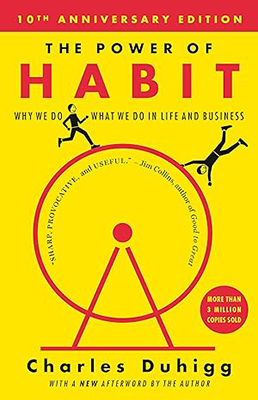The Power of Habit
“The Power of Habit” by Charles Duhigg explores the science behind why habits exist and how they can be changed. Here’s a summary:
The Habit Loop: Duhigg introduces the habit loop, consisting of three components: cue, routine, and reward. The cue triggers the habit, the routine is the behavior itself, and the reward satisfies a craving.
The Golden Rule of Habit Change: Duhigg explains that while habits can’t be eradicated, they can be replaced. By keeping the same cue and reward but changing the routine, habits can be effectively modified.
The Habits of Successful Organizations: Duhigg explores how habits operate within companies and how leaders can shape organizational habits to drive success. He uses examples like Alcoa’s transformation under Paul O’Neill to illustrate this.
The Habits of Societies: Duhigg delves into the impact of habits on societal change, using examples such as Rosa Parks and the Civil Rights Movement to illustrate how small habits can lead to significant shifts.
Keystone Habits: Some habits have the power to spark a chain reaction of other positive habits. Duhigg calls these “keystone habits” and explains how identifying and altering them can lead to widespread change.
The Neuroscience of Habits: Duhigg discusses the role of the brain in habit formation and change, particularly focusing on the basal ganglia and the formation of habit loops.
Small Wins: Celebrating small victories is crucial for habit change, as it reinforces the belief that change is possible and provides motivation to continue.
Overall, “The Power of Habit” offers insights into how habits shape our lives and provides practical strategies for understanding and changing them, whether on an individual, organizational, or societal level.

